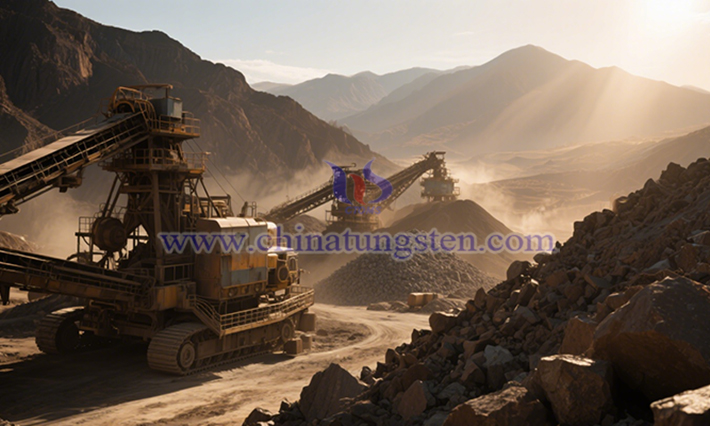Tungsten and Molybdenum Exploration Investment Grew in the First Half of 2025
- Details
- Category: Tungsten's News
- Published on Thursday, 24 July 2025 14:24
Recently, the Ministry of Natural Resources released a statement indicating that in the first half of 2025, China achieved significant breakthroughs in mineral exploration for key mineral types, discovering 38 new mineral deposits, an increase of 31% year-on-year, including 25 large- and medium-sized deposits. Exploration investments in non-oil-and-gas minerals such as tungsten and molybdenum continued to grow.

In the first half of the year, significant breakthroughs were made in the exploration of key mineral types. Notably, the first super-large uranium deposit in Heilongjiang Province was discovered; in Xinglong County, Hebei Province, an additional 3.37 million tons of rubidium resources were identified, reaching super-large scale and further solidifying China’s leading position in rubidium mining; in Longhua County, Hebei Province, an additional 27,000 tons of cobalt resources were found, reaching large-scale; in Songtao County, Guizhou Province, an additional 22.85 million tons of manganese resources were identified, reaching large-scale; and in Tekes County, Xinjiang Uygur Autonomous Region, an additional 81 tons of gold resources were discovered, bringing the cumulative total to nearly 100 tons, achieving super-large scale. To date, the majority of mineral types have already exceeded the “14th Five-Year Plan” exploration targets ahead of schedule.
Preliminary statistics show that in the first half of 2025, the national investment in non-oil-and-gas mineral exploration reached 6.993 billion yuan, increased by 23.9% year-on-year, maintaining a rapid growth trend. By mineral type, exploration investments in tungsten, tin, bauxite, copper, and phosphate mines increased by over 50% year-on-year, while molybdenum, coal, lead-zinc, gold, and graphite mines also saw varying degrees of growth. Additionally, the natural resources department has increased the supply of prospecting rights, issuing 318 prospecting licenses for strategic minerals from January to June.

Tungsten-molybdenum resources are a vital component of metallic mineral resources. China is one of the countries with the largest tungsten reserves globally, with 2.4 million tons as of the end of 2024, accounting for 52.17% of the world’s total. China’s tungsten resources are mainly concentrated in the South China metallogenic belt, particularly in Jiangxi and Hunan provinces, where the Ganzhou region in Jiangxi is known as the “Tungsten Capital of the World,” dominated by black tungsten, while Hunan is known for white tungsten. Representative deposits include Dajishan (quartz vein type), Xihuashan (quartz vein type), and Zhuxi tungsten-copper mine (the world’s largest single tungsten deposit).
China is also one of the countries with the largest molybdenum reserves globally, with 5.9 million tons as of the end of 2024, accounting for 39.33% of the world’s total. China’s molybdenum deposits are primarily distributed in Central-South, Northeast, and Northwest regions, with Henan Province holding the richest reserves, followed by Shaanxi and Jilin provinces. Additionally, provinces such as Shandong, Hebei, Liaoning, and Inner Mongolia also have considerable molybdenum reserves.
- Chinatungsten Online: www.chinatungsten.com
- CTIA GROUP LTD: en.ctia.group
- Tungsten News & Price: www.ctia.com.cn
- Molybdenum News & Price: news.molybdenum.com.cn
- Tel.: 86 592 5129696; Email: sales@chinatungsten.com



 sales@chinatungsten.com
sales@chinatungsten.com